- Home
- Michael Newton
How to Write Action Adventure Novels
How to Write Action Adventure Novels Read online
Contents
1. Adventure Writers—Born or Made?
2. A World of High (and Not-So-High) Adventure
3. For Openers . . .
4. The Tangled Web
5. The Hook
6. Lights… Camera… Action!
7. Heroes and Heavies
8. Say What?
9. “Gunpowder Orgies”
10. “It Seemed So Real”
11. Breaking In
12. The Payoff
About the Author
1. Adventure Writers—Born or Made?
I became a novelist by accident.
Impossible, you say? Not quite.
I grew up in a family that encouraged reading, and I’d always been a bookworm, though my taste in literature admittedly diverged from what my parents might have wished. We lived close by a liquor store that featured paperbacks and magazines, and by the time I got to elementary school I was already nurturing a fondness-cum-obsession for “men’s magazines”—the pulp variety, distinguished from the “nudies” by their covers, which depicted men of action locked in combat with assorted tigers, jaguars, pythons, and the scowling enemies of sundry foreign wars. My parents were concerned, to say the least, until my teacher (bless her!) offered up some sage advice. In essence, she suggested that my family might as well allow me to pursue my interests openly, instead of forcing me to go behind their backs and read the latest blood-and-guts extravaganza on the sly.
The rest, as someone said, is history.
The men’s adventure magazines, I’m sorry to report, have long since disappeared, but in due time I made the shift to full-length books—adventure, Westerns, horror, war or crime—and I discovered that I liked to write as well as read. I found real pleasure in the research papers that made other students cringe in school, and on occasion I suspected I might like to “try a book” someday. Not now, of course … but someday.
In the early 1970s, two publishing events conspired to sneak up on my blind side and make “someday” a reality. A rash of fictional biographies were published, dealing with the lives of favorite characters from series fiction—Sherlock Holmes, James Bond, Doc Savage, Tarzan—and Don Pendleton, a former-aerospace-technician-turned-adventure-writer, gave birth to the genre currently described by friend and foe alike as “action/adventure.”
I had followed Pendleton’s creation, “Executioner” Mack Bolan, through some twenty-five adventures when it suddenly occurred to me that he—the character, that is—deserved a separate and distinct biography, outside the series proper. Who should write it? Who, indeed!
Undaunted by the fact that I had published nothing, other than a few bizarre and ill-considered letters to the editor, I fired a query off to Pinnacle Books, then publishers of the Executioner series, putting my suggestion on the record. Time went by, and whimsy being what it is, I had forgotten all about the letter some months later, when I was astounded to receive a call from Pendleton himself. My query had laboriously made its way “through channels” to his desk, and while he wasn’t overly excited by my premise, he was working on a concept that was vaguely similar. There might be room for a collaborator in the deal, if I could send along some clippings of my published work.
Blind panic. Published work! The kind that people read!
Incredibly, Don didn’t laugh or slam the phone down when he learned that he was talking to a hapless would-be writer. He consented to review some articles which had been gleefully rejected by a string of editors, and he liked my style enough to grant me an audition for his latest project. The result was publication of my first successful work, as well as an apprenticeship of sorts, which taught me more about my chosen craft than any writing class could possibly convey.
My maiden voyage into print consisted of a chapter in The Executioner’s War Book (Pinnacle, 1977). Eleven years and seventy-nine books later, I’ve seen Mack through twenty-four adventures on my own (out of 117 episodes released to date), and my installments in the series have sold more than three million copies since 1982.
The moral? Action/adventure writers are made, not born.
I came to writing and the Pendleton apprenticeship much like a student going off to trade school. Fiction was a “phase” that I would pass through, I supposed, en route to the creation of sensational and “relevant” nonfiction work. My target of the moment was the King assassination, which I planned to “crack” in print, thereby achieving fame and wealth while simultaneously pulling off a major public service. The completed manuscript weighed in at something like 900 pages, and it racked up twenty-odd rejections in the next three years; in 1980, slashed to one-third of its original length, it sold to an obscure paperback house and promptly sank without a ripple in the market. Meanwhile, waiting for the “big break” to arrive, I had already sold a dozen novels and a children’s book.
In short, goals change. The difference between a would-be writer and a working author is the sale.
I still have dreams about nonfiction, and I try to keep my hand in with assorted reference volumes, but the hard fact is that ninety percent of my sales have been fiction, and most of those fall in the genre of action/adventure. I like it there, and I no longer feel the need to “rise above” the genre, searching for some “higher plane.”
There’s nothing new about the kind of snobbery that looks on genre writing with disdain. Forget about reviews of anything so “common” as adventure fiction; many critics won’t admit that paperbacks exist, much less that anything of value may be found between their covers. I won’t speculate on whether literary critics are, in fact, frustrated would-be authors, though there seems to be some evidence supporting that conclusion. (Roger Ebert, in the realm of cinematic criticism, is renowned for caustic jibes at actors and directors, but he seldom makes a reference to his own career in movie-making. Ebert’s bomb, Beyond the Valley of the Dolls, is usually ranked among the most sadistic, sexist, generally repugnant exploitation films in living memory. And what about Rex Reed, in Myra Breckenridge!) For the record, let’s just say there aren’t a lot of literary critics with their names on novels currently in print.
A friend and fellow action writer, William Fieldhouse, once described for me his meeting with an individual who asked him when he planned to write “something serious.” Bill’s answer, which I cherish, was that everything he writes is serious. It’s how he makes his living, after all, and he would soon be out of business if he went to work each day with attitudes of what-the-hell.
My favorite close encounter of the snobbish kind took place in grad school. I had signed up for a literary criticism course (what else?), and wound up sitting next to an acquaintance I had worked with years ago, behind the grill at Golden Arches. As we brought each other up to date, I learned my friend was “into” poetry; in fact, he had been paying magazines to print his verse. I told him I was writing action novels for an L.A. publisher and pulling in four hundred bucks per manuscript. (It sounds like chicken feed today, but at the time, 150 pages covered two months’ rent.) When I suggested that he might try something similar, the poet smiled and hit me with a classic line: “I’ll think about it, if I ever want to prostitute my art.”
Okay.
We parted friends. By that time in my relatively young career, I knew that he was wrong. You can’t sell out unless you give a project less than all you’ve got.
It doesn’t faze me anymore-at least, not much—when critics, Ivy League professors, or psychologists take quill in hand to dump on “popular fiction.” The day my books aren’t popular, I’ll start to worry. In the meantime, I’m too busy telling stories.
That’s the nice thing about writing action/adventure. Readers by the millio
ns realize what literary critics and professors often fail to grasp: the fact that genre writing isn’t necessarily inferior. It is a discipline—an art form—that demands the very best a writer has to offer.
I suppose it boils down to a question of respect.
A writer who does not respect his audience (remember them? the people you expect to shell out hard-earned money for the pleasure of your company?) cannot expect the readers to keep coming back for more. A writer who does not respect himself, or his material, is wasting everybody’s time.
If you approach your subject matter—genre fiction, mainstream, or whatever—with a clothespin on your nose, you can expect your readers to respond in kind. They may forgive a shaky subplot, undernourished characters, or faulty grammar, but a rip-off by a condescending “artist” is a bitter pill to swallow, and you won’t find many folks out there who ask for seconds. Every writer, first and foremost, is a storyteller who has an obligation to present his chosen subject matter in the best, most entertaining form available.
If you’re still with me, chances are you already possess the first prerequisite for action writing—namely, an attraction for the genre. Fascination isn’t half the battle, but it is a long step forward. In the coming chapters, we’ll examine genre history and learn to read the modern market; we’ll discover how an action novel comes together, from the germ of an idea to final copy; we’ll discuss the finer points of plotting, creating dialogue, and bringing characters to life, while coping with the “problems” raised by sex and violence in adventure fiction. Manuscript mechanics and the details of submission are included, with an eye toward eliminating the roadblocks to potential sales.
The action genre is a relatively new publishing industry which has ample room for authors who approach their subject with a sense of style. Before we find out where the market’s going, though, we need to take a look at where it’s been, the origins of action writing as a medium distinct and separate from its peers. For that, we need to visit Pittsfield, Massachusetts, on a summer afternoon in 1969.
2. A World of High (and Not-So-High) Adventure
My recon is complete and target identification is positive. Lanrenti is the wheel, the OIC of the local setup. Every night at 1750 hours his car is parked at the curb in front by the man called Mister Erwin. The other Mister is a troop called Janus—Mister Janus. Must be some kind of a joke. The only ones they call “Mister” are the ones with side-arms. The one who looks like a salesman is named Brokaw. The college-boy type is Pete Rodriguez. The five of them leave the office at 1800 hours every night, and go out to their substations to pick up collections from their legmen. Later they make personal calls on slow accounts. But not tomorrow night! The Executioner has a little collection substation of his own all set up, on the fourth floor of the Delsey building. It’s a perfect drop. I ran my triangulations last night and again tonight. It will be like picking rats out of a barrel. The targets will not have anyplace to go but down—to the ground. I timed out at six seconds on the dry run tonight and that was figuring them to scatter in all directions after the first round. I think I will better that time tomorrow because I do not believe these troops have been under fire before. I will probably be half done before the reaction even begins. Well, we will see.
With that pronouncement, “Executioner” Mack Bolan launched his War Against the Mafia and introduced a new dimension to the field of action novels. Nineteen years beyond that first barrage in Pittsfield, he is going strong with 117 episodes in print and no end in sight.
In Chapter 1, I called Don Pendleton the father of the action genre. It is probably more accurate to label Don a pioneer, blazing the trail for a new generation of writers to follow. In the early days, his novels were the spearhead of a revolution in adventure fiction, but it took a while for Don to realize precisely what he’d done.
A New World of Adventure
The revolution actually began with Bee Line Books, a porno house that sought to go legit in 1969 by altering its name to Pinnacle and grinding out a crop of action thrillers. One of those was Pendleton’s unique and energetic story of a Green Beret recalled from Asian duty to arrange the funerals of his parents and his sister. Driven to the brink of madness by harassment from a team of loan sharks, Bolan’s father shot the other members of the family before he turned his weapon on himself. Untouchable through legal means, the local mafiosi were expected to escape scot-free, until a grim avenger took their case in hand, annihilating those responsible for shattering his family, moving on to spread a reign of terror throughout the local syndicate.
Originally titled Duty Killer, altered to The Executioner by press time, Bolan’s saga took the industry by storm; it also took Don Pendleton and Pinnacle completely by surprise. The Executioner’s phenomenal success led to eight hot sequels in the next two years and encouraged Pinnacle to follow up with other heroes bearing lethal monikers—The Penetrator, The Destroyer, The Death Merchant, The Butcher, The Vigilante—emerging as the hottest series house in business.
Stung by Pinnacle’s success, competitors weighed in with copycats like Killinger, The Marksman, The Assassin, The Survivalist, The Mercenary. Even old Nick Carter, hero of a series that preceded Bolan’s 1969 debut, received a face-lift from his editors, emerging as the Kill Master.
The new crop of heroes did not spring full-grown from thin air. While their weapons were new, their targets ripped from tomorrow’s headlines, they maintained a historic tradition of adventure fiction dating back to Beowulf. Classic works like Kidnapped, Treasure Island, and Swiss Family Robinson continued the line in later generations, while Jules Verne added a dash of science fiction to his action yarns like Journey to the Center of the Earth. The exploits of Tarzan, Doc Savage, and Conan are patently action/adventure, following the evolution of “the pulps,” which later fueled my own imagination as a child. Beginning in 1953, James Bond carried the ball with continental flair, racking up some impressive body-counts against SPECTER, SMERSH, and the Spangled Mob.
In short, adventure’s been around forever, but its face has changed.
Unlike the heroes who had gone before, protagonists of modern action novels were required to cope with Evil on its own malignant terms. No cavalry was galloping to save the day, and readers of the genre seemed to understand that good guys finish last unless they finish off the bad guys first. The righteous loner with a heart of gold and fists of steel could never hope to stand against the Mafia or KGB. He needed Uzis, rocket launchers, M-16s.
The newborn genre’s startling success emerged from many factors, one of which must be conceded as a pure coincidence of timing, vis-a-vis contemporary world events. In Vietnam, America’s self-confidence was shattered by the Tet offensive, and the grunts dug in for four long years of brutal combat by attrition. On the home front, angry demonstrations, urban riots, and a rising tide of street crime strained the fabric of society, the rifts exacerbated by judicial rulings that appeared to favor criminals. New exposes of syndicated crime, as typified by The Valachi Papers, taught Americans about the nation’s “hidden government.”
Within this atmosphere, the action genre’s central theme—dynamic hero figures taking on the heavies with assistance from the latest military hardware—struck responsive chords among a generation weaned on “anti-heroes,” as personified by grubby outlaws in The Wild Bunch, unwashed vagabonds in Easy Rider, sleazy “lawmen” in The French Connection. Action novels—and their cinematic counterparts in films like Dirty Harry—offered clean, vicarious solutions to frustration, anger, fear. Along the way, their authors also did a bang-up job of entertaining millions … which, as we’ve established, is the basic task of any storyteller.
The latter 1970s observed a brief decline in action series; of the early crush, no more than three or four survived. Their swift demise was brought on by recession and American withdrawal from the war in Vietnam, cessation of the “long hot summers,” and the advent of a new Me Generation. The Mafia was still around, but marathon publicity had robbed it of
its novelty, its menace. There were even wistful indications that the New York mob families, running short of members, were forced to import greenhorns from impoverished villages in Sicily. The “gang that couldn’t shoot straight” was a public laughingstock.
Times change, however, and within a few short years, action/adventure got a new shot in the arm from rampant terrorism, hostage crises, and the ineffectual response to same by home-grown statesmen. Heroes were again in short supply, and therefore in demand. Before the 1980s had a chance to gather steam, another pack of macho men were off and running, and a few dynamic heroines had been created who were prepared to match their stride. And, with some minor variations wrought by time, those new arrivals constitute the action market as it stands today.
The Marketplace
The modern action genre now includes a number of important subdivisions that beginning writers should consider as potential points of entry to the marketplace. The paramilitary hero has remained a staple of the genre, with Mack Bolan and his fellow pioneers encountering stiff competition from the likes of Hawker, The Specialist, the SOBs, and Cody’s Army, just to name a few. Since carrying his war from Pinnacle to Gold Eagle Books, the Executioner has taken a cue from television, giving rise to spinoff series in the form of Able Team and Phoenix Force. (Ironically, while Rambo has emerged for many fans as the penultimate adventure hero, he was actually killed off in the novel First Blood, revived in the published sequels through some editorial sleight-of-hand.) In tune with modern headlines, heroes of the action genre now apply themselves to terrorists and street gangs, killer cults and neo-fascists, in addition to the proven heavies of the mob and Moscow.
Men at war have captured a substantial section of the market during recent years. The series set in World War II (The Sergeant, The Rat Bastards) have experienced a poor response from action readers, in comparison to tales of Vietnam. New series like The Gunships, Vietnam: Ground Zero, The Black Eagles, Chopper 1, and others give Americans a second chance to do it right in Southeast Asia. History may be inviolate in terms of winners and losers, but the action genre paints a rather different portrait of the veterans who were reviled at home as “baby-killers.”

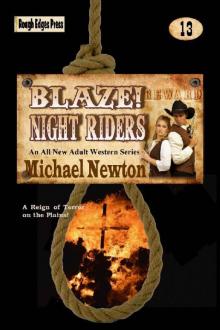 Blaze! Night Riders
Blaze! Night Riders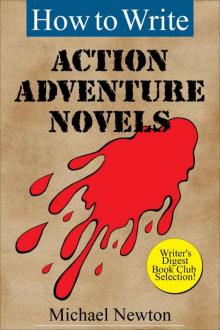 How to Write Action Adventure Novels
How to Write Action Adventure Novels Blaze! Bad Medicine
Blaze! Bad Medicine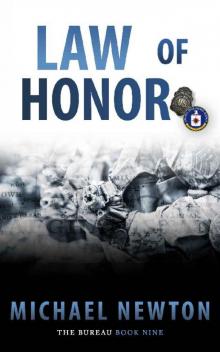 Law of Honor
Law of Honor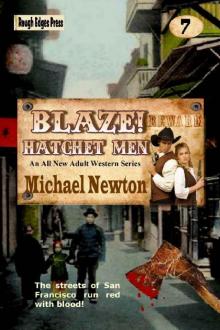 Blaze! Hatchet Men
Blaze! Hatchet Men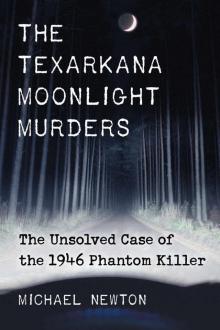 The Texarkana Moonlight Murders
The Texarkana Moonlight Murders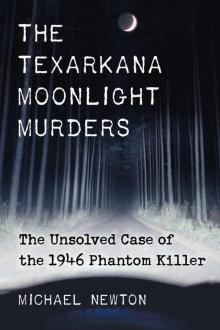 The Texarkana Moonlight Murders: The Unsolved Case of the 1946 Phantom Killer
The Texarkana Moonlight Murders: The Unsolved Case of the 1946 Phantom Killer